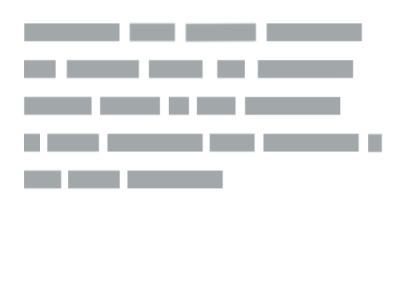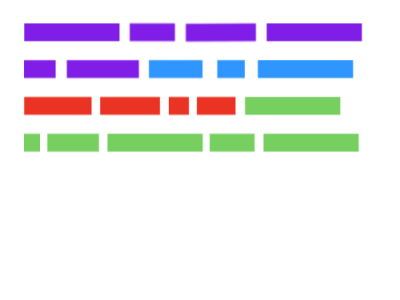
DESCRIPTION
This method focuses on outcomes, not features. It’s a framework for understanding why customers use or purchase products and services: not just what the product is, but what job the user is trying to accomplish in a given circumstance with the product or service. Rather than segmenting by demographics or features, JTBD asks: what progress is the customer trying to make, what problem are they trying to solve, what need gets satisfied (functionally, emotionally, socially)? The method is especially useful for innovation, product design, marketing, messaging, helping organizations align offerings to real jobs customers have. The superpower of it, is that it reveals hidden and unarticulated needs, avoids assumptions about why people buy, helps reduce innovation risks by focusing on how customers define success in getting jobs done. It often surfaces unexpected insights (emotional jobs, social dimensions) that conventional market research misses.
ORIGIN
Tony W. Ulwick developed Outcome-Driven Innovation in the 1990s, which formalized many of the measurement, mapping, outcomes-oriented parts.
Clayton M. Christensen popularized the JTBD idea, especially via “Competing Against Luck”. The famous “Milkshake” case (McDonald’s) is often cited as an empirical example of JTBD in action, used by Christensen & team (see “anecdotes” below).
USED BY
Innovation units trying to find unmet customer needs or opportunity spaces to redefine market approach or product design.
Approximately needed time
- Step 1: 1 hours
- Step 2: 2 hours
- Step 3: 1 hours
- Step 4: 1 hours
- Step 5: 1 hours
- TOTAL: 6 hours
METHOD
MATERIAL YOU COULD NEED: Data, data, data!
STAKEHOLDER GOOD TO KNOW: Stakeholders in charge of product, marketing, design and customer success…
STEPS
one
0%DEFINE THE JOB CLEARLY
If the job is not clearly defined (context + what “progress” means + constraints), then insights based on wrong assumptions can lead to misaligned product or messaging. Clarity helps align all stakeholders on what is being solved.
Create a job statement: e.g. “When [situation], I want to [job], so I can [desired outcome].” Include trigger/circumstance and consider functional, emotional, social dimensions of the job. Not just what people do, but how they feel and how they want to be perceived. Also identify any related jobs (e.g. cleanup, maintenance, social expectations).
Example: For a commuter using a milkshake: “When I’m driving to work and feeling bored and hungry, I want something I can consume easily with one hand, that fills me until lunch, to make my commute more enjoyable.”
two
0%GATHER INSIGHTS
Jobs are often hidden and customers may not articulate them directly. Observing behaviour and asking probing questions can uncover latent jobs, struggles, constraints. This ensures design or messaging is grounded in real experience. Interview users and customers: focus questions on recent experiences & outcomes and ask “why” repeatedly.
Observe behavior in context where job is being performed, or simulate it and collect stories and anecdotes: what works, what doesn’t, what trade-offs people make, to implement them into the story itself.
Example: Interview commuters, observe what they buy for breakfast, what they bring, where they stop, what frustrates them. Find that they skip breakfast sometimes because packaging is inconvenient or cleanup messy.
three
0%MAP OUTCOME AND STEPS
Once you know the job and the user’s struggle, mapping the steps or job journey and the desired outcomes helps identify where friction exists, what parts of the job are underserved, and what success looks like. This supports prioritization of improvements or storytelling hooks.
Break down the job into sequential steps: what happens before, during, after hiring a solution. For each step, identify what outcomes the user wants (e.g. “reduce time”, “don’t spill”, “feel comfortable”, “show competence”) and note emotional and social outcomes.
Example: Job of “commuting breakfast” job journey: leaving home → buying/ordering → transporting / eating while driving → clean up / disposal → feeling satisfied. Outcomes: less mess, filling, easy to eat one-handed, not oily etc.
four
0%PRIORITIZE VALUE PROPOSITIONS
Not all jobs or outcomes are equally important or equally underserved. Prioritization helps focus on what matters, and value propositions aligned with these jobs tend to resonate more strongly in messaging and product design.
Use importance vs satisfaction (current solutions) to spot gaps: where outcomes are highly desired but current solutions are weak. Identify which jobs and outcomes have greatest opportunity (market size, emotional weight, strategic fit).
Articulate value propositions: how your product or messaging can satisfy those unmet outcomes more strongly than alternatives.
Supporting methods: Eisenhauer or SWOT matrix
Example: The milkshake insight: commuters needed a breakfast substitute that’s easy to consume, engaging, occupying time. By repositioning the milkshake (in consistency, packaging, marketing) to do that job, McDonald’s could serve unmet needs.
five
0%OUTCOME STORYTELLING
To translate the insights into what the customer actually sees, hears and uses is the prupose in this step. If product or messaging doesn’t reflect the job or the prioritized outcomes, the benefit is lost. Also, storytelling around these jobs helps customers see themselves in your solution, fosters connection.
Decide which features and product changes map to important job steps and outcomes. Perhaps adjust packaging, delivery, usability.
Craft messaging and narrative that frames the product as “helping the job get done”, referencing the context, pain points, trade-offs customers make and use customer stories and testimonials to reflect the job being done, including emotional or social components.
Example: If you know “commute breakfast” job, then marketing message might be: “Your breakfast that fits your journey: mess-free, satisfying, one-handed comfort.” Product changes might include a thicker consistency, spill-safe container.
visual
0%Description


HINTS
0%Additional stuff
add
0%JTBD has multiple variants:
Ulwick’s original “innovation” version has more formal measurement and outcome ranking, while Bob Moesta’s work has more qualitative, narrative focus. It helps not just for new product development, but also for repositioning, marketing and service design.
A challenge: sometimes defining “jobs” too broadly, or getting too many outcomes, which can overwhelm decision making. Prioritization is essential. Also, customers may “hire” different solutions depending on context, so contextual understanding is key.
more
0%PROMINENT BRANDS USING IT:
Cordis Corporation: medical device company that applied JTBD / ODI to reposition angioplasty balloons.
Seventh Generation: in natural cleaning, used JTBD thinking to incorporate emotional & social jobs (safety, values) in addition to functional ones.
QuickBooks / Intuit: repositioned some features when they understood core jobs their users were hiring their product to do.
Many tech / SaaS companies (Airbnb, Intercom etc.) use JTBD to shape product roadmap and messaging.
ANECDOTES:
The MILKSHAKE story: McDonald’s wanted to improve milkshake sales but couldn’t figure out why changes in flavor or price didn’t help.
Researchers observed that many morning customers “hired” milkshakes to make long commutes less boring and keep them full until lunch. While others, mainly parents in the afternoon, bought them as fun treats for their kids. The insight: people buy products to get specific “jobs” done in their lives, not just for their demographic fit.
By redesigning around these real jobs, McDonald’s turned an underperforming product into a purpose-driven one.




